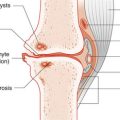19 Diabetes mellitus and other disorders of metabolism
Questions
I would like to know the exact mechanism of entry of potassium into cells under the influence of insulin.
I would like to know more about the use of the glitazone group in type 2 diabetes: its action, side-effects, precautions taken on using them.
Is there any role for steroids in the management of resistant diabetes mellitus (daily insulin requirement exceeding 100 units/day)? Don’t they make glycaemic control worse?
Is a dosage of 2.5mg/day of methyltestosterone, as a component in some multivitamin formulae, safe to give to diabetics or will it make the diabetes more difficult to control (see also Chapter 5, question 5)?
Is gabapentin superior to carbamazepine in terms of efficacy in the treatment of painful diabetic neuropathy? What are its side-effects?
Dextrose infusion in quinine induced hypoglycaemia causes more hypoglycaemia, so what is to be used?
What is the best drug to be added to a statin in a case of familial hypercholesterolaemia not responding to lifestyle and diet modification plus a statin?
Insulin promotes active transport of glucose into the cell (using the glucose transporter GLUT 4) and this is accompanied by potassium transport.
The diagnosis for diabetes mellitus is a fasting plasma glucose greater than 7mmol/L (126mg/dL) or random plasma glucose greater than 11.1mmol/L (200mg/dL). Two abnormal values are required in an asymptomatic patient to indicate impaired glucose tolerance are shown in Box 19.1.
Both the random blood sugar and the fasting blood sugar are of some use in the management of type 2 diabetes. However, both are isolated measurements. It is much more useful to get patients to measure their own blood glucose three or four times a day, say at 3-weekly intervals. An alternative is to use the glycosylated haemoglobin level, which is the best guide to overall blood sugar levels over the preceding 3 months. In both type 1 and type 2 diabetes, good control reduces the risk of complications. Your patient should therefore be encouraged to keep a normal blood sugar and a normal level of glycosylated haemoglobin.
No, it is not a good idea because refined sugar will produce abrupt swings in glucose level due to rapid absorption. Better to eat an apple!
Impaired glucose tolerance is a risk factor for future diabetes and cardiovascular disease. Therefore, many diabetologists start metformin therapy (Fig. 19.1).
No, it is not always necessary. However, the group of patients over 50 years of age with a coronary heart disease risk greater than 15 over the next 10 years will include many people who are diabetics, and they should be given low-dose aspirin.
The mechanism of atherosclerosis is not clear but probably includes:
The pathogenesis of the renal complications of diabetes mellitus is still not completely understood.
In the kidney, the glomerular filtration rate (GFR) is initially increased out of proportion to plasma flow owing to an elevation in the transglomerular pressure gradient. The raised glomerular pressure might promote transglomerular passage of proteins as well as glycosylate end products. This could lead to proliferation of mesangial cells and accumulation of matrix products in the basement membrane. These are the first changes seen pathologically when microalbuminuria occurs. These changes eventually lead to glomerular sclerosis with progressive loss of glomeruli and more marked proteinuria.
Yes, with diet and a statin (Table 19.1).
Table 19.1 Target goals of risk factors for diabetic patients (standards from the American Diabetes Association, 2003)
| Parameter | Ideal | Reasonable but not ideal |
|---|---|---|
| HbA1C | <7% | <8% |
| Blood pressure (mmHg) | <130/80 | <140/80 |
| Total cholesterol (mmol/L) | <4.5 | <5 |
| LDL | <2.0 | <3.0 |
| HDL* | >1.1 | >0.8 |
| Triglycerides | <1.7 | <2.0 |
* In women, >1.3 mmol/L. HbA1C, glycosylated haemoglobin; HDL, high-density lipoprotein; LDL, low-density lipoprotein.
You are right in that hyperkalaemia is more dangerous than hypokalaemia. However, cardiac arrhythmias do occur with hypokalaemia.




